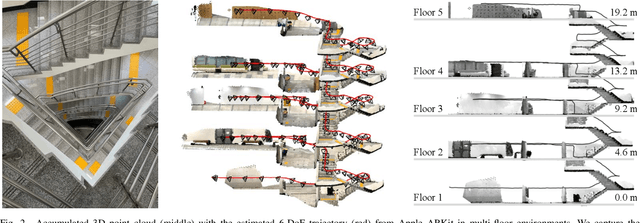Minkyeong Song
An Empirical Evaluation of Four Off-the-Shelf Proprietary Visual-Inertial Odometry Systems
Jul 14, 2022



Abstract:Commercial visual-inertial odometry (VIO) systems have been gaining attention as cost-effective, off-the-shelf six degrees of freedom (6-DoF) ego-motion tracking methods for estimating accurate and consistent camera pose data, in addition to their ability to operate without external localization from motion capture or global positioning systems. It is unclear from existing results, however, which commercial VIO platforms are the most stable, consistent, and accurate in terms of state estimation for indoor and outdoor robotic applications. We assess four popular proprietary VIO systems (Apple ARKit, Google ARCore, Intel RealSense T265, and Stereolabs ZED 2) through a series of both indoor and outdoor experiments where we show their positioning stability, consistency, and accuracy. We present our complete results as a benchmark comparison for the research community.
 Add to Chrome
Add to Chrome Add to Firefox
Add to Firefox Add to Edge
Add to Edge